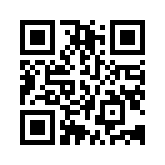Topical Treatments for Atopic Dermatitis
Topical Steroids and more
This week we are continuing to catch everyone up on the ins and outs of atopic dermatitis. If you missed any of our previous articles, check them out. Topics thus far have been an overview of Atopic Dermatitis, bathing tips, phototherapy, and tachyphylaxis. Today we are talking about topical treatments for atopic dermatitis. As with our bathing tips article, many of the things we are discussing here can be applied to other skin conditions as well.
For a quick review, atopic dermatitis is a skin condition that usually starts in childhood but may persist into adulthood. Patients with atopic dermatitis have red, itchy, rough patches of skin that come and go. Patients with atopic dermatitis often have a disrupted skin barrier, so nourishing the skin with bathing and moisturizing cannot be overstated.
Topical Steroids
The mainstay and the first line of prescription treatments for atopic dermatitis are topical steroids. Topical steroids often get a bad rap from the media, but they are a dermatologist’s best friend. Many patients are fearful about using topical steroids, but when used correctly there is no reason to fear. Dermatologists are trained to choose the correct topical steroid in the correct location to treat the condition and limit side effects.
What are the possible side effects of topical steroids? The main concern with topical steroids is thinning of the skin. This is particularly a concern on thin skin areas like the underarms, groin, and face. Limiting use to a low potency steroid only when needed is important in these areas.
How much topical steroid should I use? One scientific way of describing how much to use is the “fingertip unit”. A fingertip unit is a ribbon of medication as long as the first segment of the tip of a finger as demonstrated in the photo. A fingertip unit is enough to cover the area of the palm of your hand.
How long do I use the topical steroid and how many times a day? Many years ago when still a medical student, a pediatric dermatologist taught me the following. Each day look at the affected area of skin. “Use twice a day when rough and red, once a day when just rough or red, and stop on that area when clear”. It’s been over 20 years now and using that has kept my patients safe from overusing topical steroids.
How can you tell how strong a topical steroid is? There are 7 classes of strengths of topical steroids. Class 1 is the strongest and Class 7 is the weakest. The difference in these classes varies exponentially. The strength of a topical steroid is not determined by the concentration of the ingredient, but rather by the class of medication. For instance, Triamcinolone 0.1% cream (Class 4) is hundreds of times stronger than Hydrocortisone 2.5%. (Class 7).
Are there any other medications other than topical steroids? Yes, there are two other types of medications that are FDA approved for atopic dermatitis. Topical calcineurin inhibitors, phosphodiesterase inhibitors, and JAK inhibitors.
Topical Calcineurin Inhibitors
There are two of these medications, Tacrolimus (Protopic) and Pimecrolimus (Elidel). These were FDA-approved over 20 years ago to treat atopic dermatitis as what we call “steroid-sparing agents”. As dermatologists, we use these medications in skin areas where medication is required on a regular basis. Often these medications are not enough to clear a rash, but they work well as maintenance medications. For thin skin areas, I usually encourage patients to use these medications if every time they stop the topical steroid they flare back up. For those who are risk-averse, these medications do have a black-box warning. This is because when this medication is given in high doses by IV to rats it can cause lymphoma. When talking to patients, I usually follow that up with… “But we won’t be giving it IV and you’re not a rat”. I consider these medications very safe to use.
Topical Phosphodiesterase Inhibitors
There is only one medication in this class, Crisaborole ( Eucrisa). To be honest, I rarely prescribe Eucrisa because many patients have already tried this medication from their PCP and have had a poor response. The side effect profile is good. Interestingly, there is an oral phosphodiesterase inhibitor called Otezla that we use for psoriasis, but it is not approved for atopic dermatitis.
Topical JAK Inhibitor
This is the newest of the topical medications for Atopic dermatitis. Ruxolitinib (Opzelura) blocks JAK1 and JAK2, which are enzymes that play a role in inflammation of the skin in atopic dermatitis. Because this is brand new, I have little experience with it thus far. As with all new medications, insurance companies generally require that we try and fail with older medications before moving on to something newer and more expensive.
If you are living with atopic dermatitis, hopefully, these and other tips we have shared recently will help you in managing your skin condition.
—————–
If you know someone who may find this article helpful, please share it with them! Follow us on social media this week, and subscribe to our growing YouTube channel! If you would like to receive these posts in your email inbox, Subscribe to our Site.
